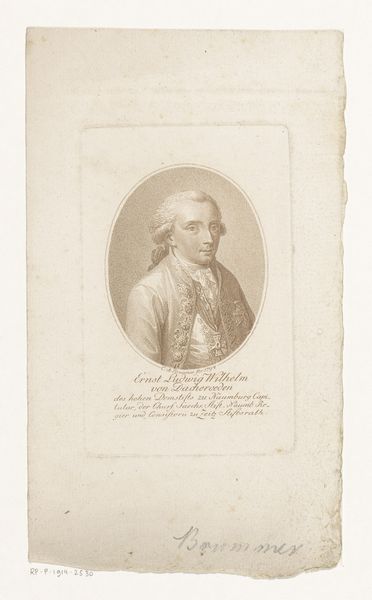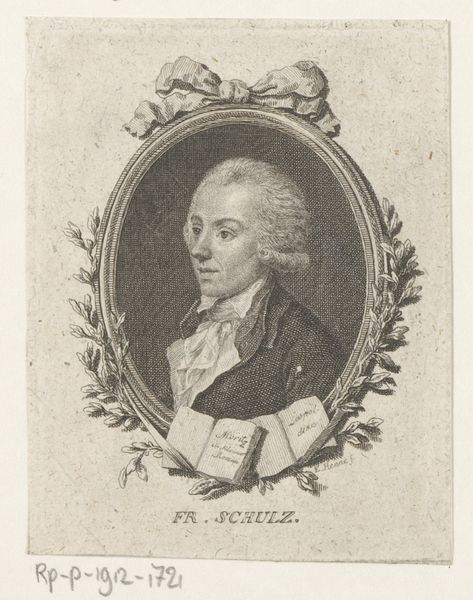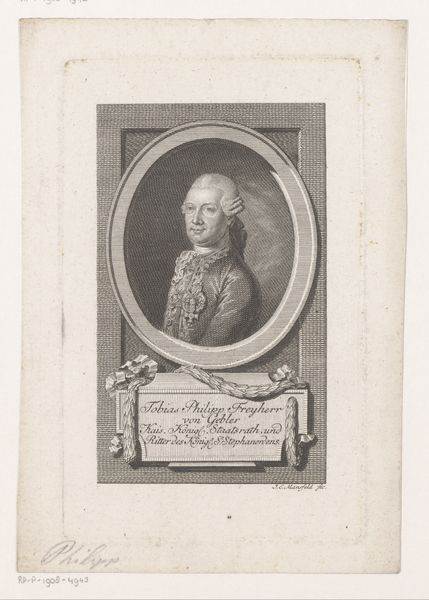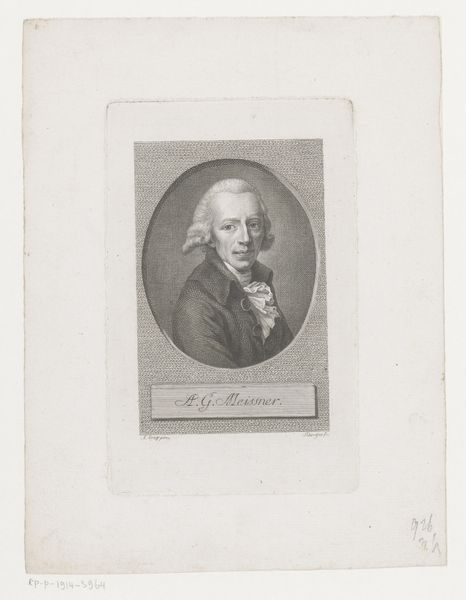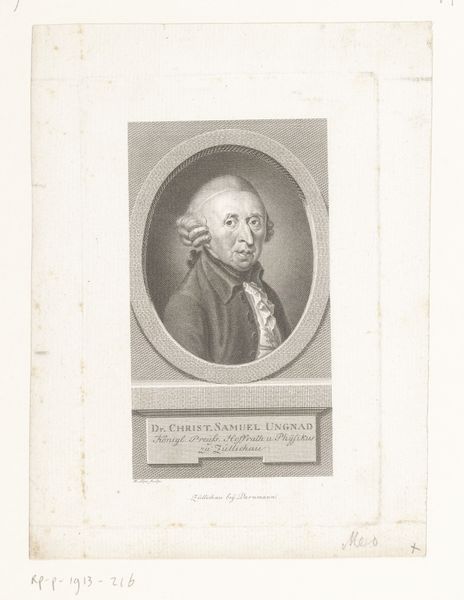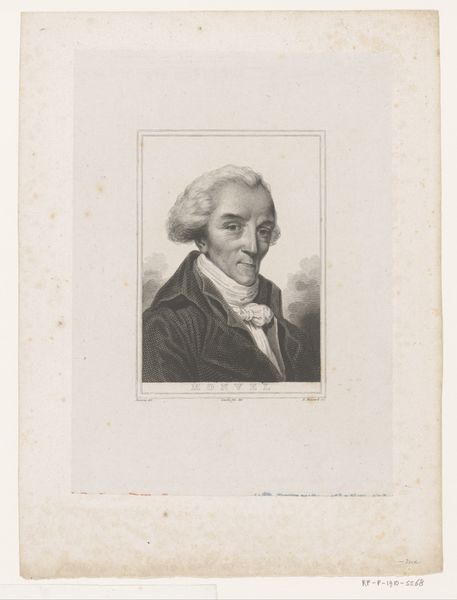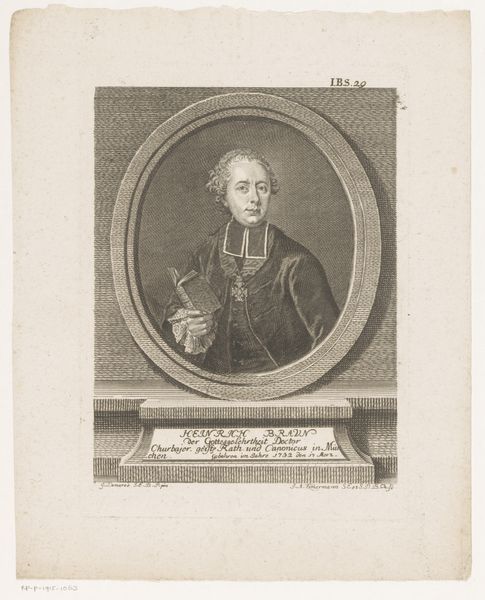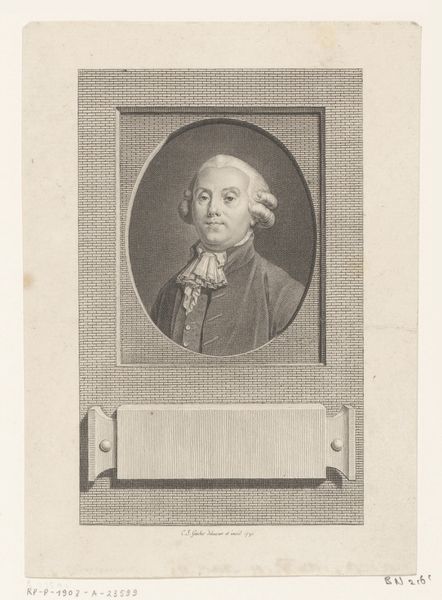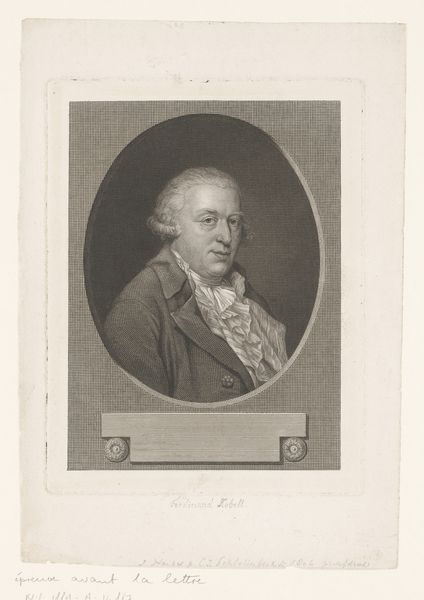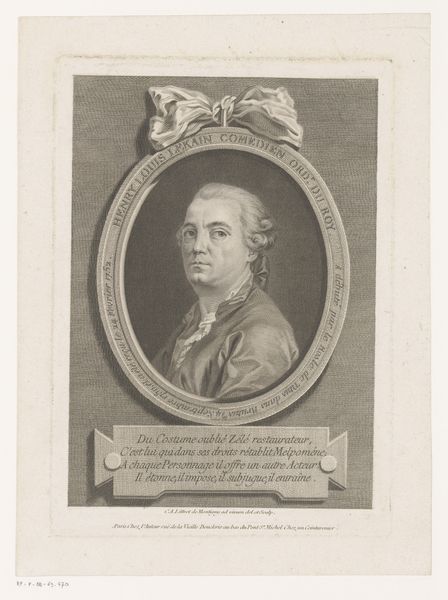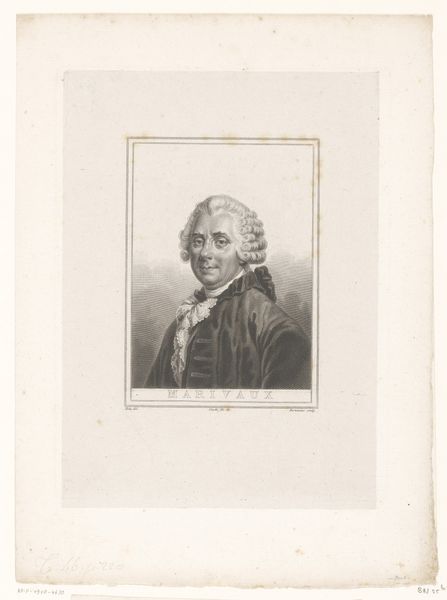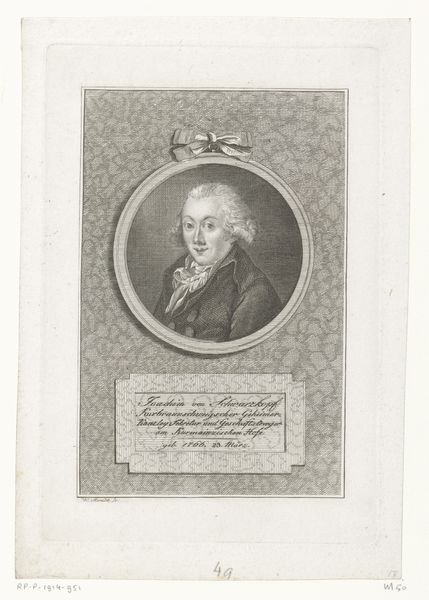
print, engraving
#
portrait
#
neoclacissism
# print
#
history-painting
#
engraving
Dimensions: height 159 mm, width 128 mm
Copyright: Rijks Museum: Open Domain
Curator: Let's take a look at "Portret van Friedrich Wilhelm Basilius von Ramdohr," an engraving made sometime between 1794 and 1797 by Johann Gottlieb Boettger. Editor: My first impression is a certain reserved elegance. The subject's gaze is direct but not confrontational, and the monochrome palette adds to a sense of controlled formality. Curator: The engraving's meticulous detail exemplifies Neoclassical principles. Notice the crisp lines defining Ramdohr’s features and the precisely rendered texture of his jacket and hair. The composition is structured, balanced and adheres to a classical portrait format. Editor: True, but it also speaks volumes about the sitter’s position within the social hierarchy of the time. This is a portrait steeped in privilege, capturing not only Ramdohr's likeness, but also conveying a specific ideal of aristocratic identity. His clothing, his powdered wig, all these signal power and status. It begs the question of what class this engraver, Boettger, comes from in relation to Ramdohr, and who could even see or afford to see this print. Curator: Those trappings are definitely present but it is important to note that, visually, the focus on line, clarity, and rational composition aligns with Neoclassicism's broader aesthetic goals of reviving classical ideals of order and reason. The piece presents a carefully constructed image intended to convey authority and intellectual standing. Editor: It's that constructed image, though, that reveals deeper tensions. It is a projection of authority that is undeniably rooted in the era's unequal power structures. To view the work critically requires seeing through this carefully cultivated surface and asking ourselves who is missing from this picture, whose stories remain untold because of such pervasive structures of power. Curator: A productive lens for further reflection is this. Focusing purely on the form, the piece is a masterclass in the engraver’s craft with the mastery of lines which results in very well rendered tones and shadows. Editor: Indeed, and these observations open further conversations about whose mastery and which narratives are valued and represented. Thank you, Friedrich.
Comments
No comments
Be the first to comment and join the conversation on the ultimate creative platform.
